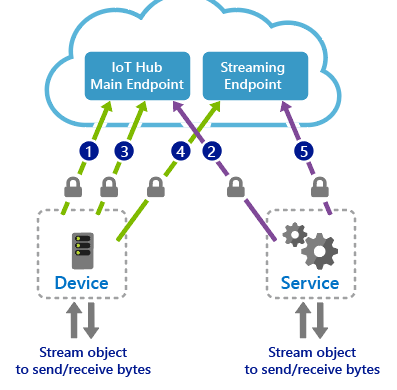INTRODUCTION
The aims of Azure IoT Hub are enormous in quantity. But they would only make sense to us once we are thorough with the basics. Having said that, let us understand what Azure IoT Hub signifies.
The Azure Internet of Things is a one-stop solution that works and operates in the cloud.
The Azure cloud platform incorporates more than 200 products as well as cloud services that are designed to help consumers with better solutions. It is benefited by consecutive inventions and promotes development for today as well as for the future that lies ahead.
USES OF THE AZURE IoT HUB
- Azure IoT Hub is made up of one or more devices and many back-end services that convey each other.
- IoT Hub benefits and fastens multiple messaging patterns such as file upload from various devices and and also request-reply methods to control your devices from the cloud service.
- Azure IoT Hub or the Azure Internet of Things provides us with a cloud-hosted solution back-end to connect to any possible device virtually.
- It is a service that is organized and hosted in the cloud and it performs as the central messaging hub for bi-directional communication between the IoT application and the device it manages and is in charge of.
- Azure IoT Hub allows safe and secure communications. It also gives the access to control the use of per-device security keys.
- It gives us heavy monitoring for connectivity of devices and device identity management as well.
- It is inclusive of device libraries. This is for popular platforms as well as languages.
- Functions like analyzing the telemetry to provide insights, either in real-time or after the fact, controlling which devices can connect to your infrastructure, or sending commands from the cloud to a specific device are usually performed by back-end services offered by Azure IoT.
- It also controls the state of your devices and monitors their activities.
- They perform the function of provisioning devices and controlling the devices that connect to your infrastructure.
The function of device communication can be best explained by contemporary frameworks such as,
Sending temperature from a mobile refrigeration truck in regular intervals of 5 minutes to an IoT hub.
It is on the back-end service to ask the device to send telemetry more frequently to help identify an issue.
The device can also send alerts based on the values read from the sensors. For instance, while monitoring a batch reactor in a chemical plant, you might want to send an alert when the temperature exceeds a particular value.
Some of its services are:
IoT Hub: This particular service allows you to control a considerable number of IoT devices, which can even go up to a billion, by logging into an IoT hub from your device. The utmost need for this would arise when you want communication that goes both ways between your devices and back-end. It is the primary and fundamental service for IoT solution accelerators and IoT Central.
IoT Hub Device Provisioning Service: It assists IoT Hub in a way that you can use to safely and securely provision devices on your IoT hub. Rather than provisioning a lot of devices one at each time, this service offers you the prerogative to quickly and easily provision millions of devices all at the same time.
IoT Edge: This service can be used to analyse data on IoT devices instead of in the cloud. It builds on the very top of the IoT Hub.
INTRODUCTION TO MQTT
MQTT (Message Queuing Telemetry Transport) is nothing but a lightweight messaging protocol that was developed by IBM and was first released in 1999.
MQTT can also be defined as a publish-subscribe network protocol that transports messages between devices. It translates messages between devices, servers and applications.
Initially, the MQTT protocol was created to link sensors on oil pipelines with communication satellites, with prominence on minimal battery loss and bandwidth consumption.
A few out of the several benefits offered by MQTT are minimized data packets, energy efficiency, real-time operation with little to no delay, and retained messages that clients automatically receive after subscribing.
CONCLUSION
Azure IoT hub is and always has been a one-stop solution and destination when it comes to virtual connections. In the contemporary world of IoT, the Azure IoT hub is something that everyone will blindly go for. Its obsession and truthfulness with safety and security catch the eye of people at the helm of working.
It provides the access to control the use of per-device security keys. It also assists us with heavy monitoring for the connectivity of devices and device identity management.





